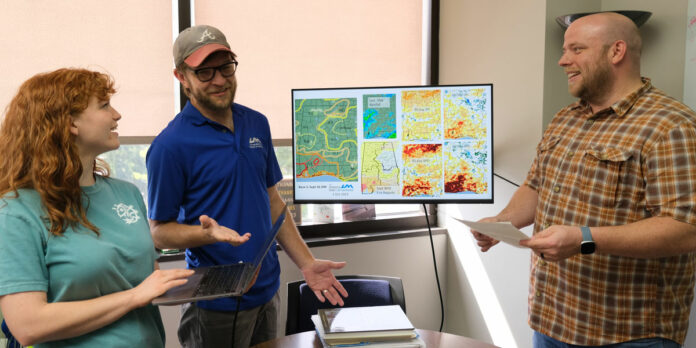HUNTSVILLE – The latest drought map from the United States Drought Monitor has placed most of Alabama in the category of moderate to extreme drought. The information was provided by the Alabama Office of the State Climatologist.
The Office of the State Climatologist, located at the University of Alabama in Huntsville, is the state’s authority for monitoring drought conditions and oversees providing recommendations of setting Alabama’s classifications of drought to the United States Drought Monitor.
Based on weather measurements such as air temperature, relative humidity, soil moisture and precipitation, along with crop impacts, Associate State Climatologist Dr. Lee Ellenburg and Assistant State Climatologist Dr. Robert Junod meet each week to determine and monitor drought across Alabama.
For 15 years, Alabama’s State Climatologist, Dr. John Christy, provided this input, but recently decided to expand the roles of Ellenburg and Junod to take over the crucial drought monitoring task.
“Many areas of Alabama experienced less than an inch of rainfall during the month of September,” said Ellenburg. “On average, we normally get 3-4 inches, though some of that comes from tropical systems. The lack of rainfall and the unusually warm temperatures have led to a rapid onset of drought conditions.”
As a result, this week, the office recommended a broad degradation of conditions across the state, with areas in northern Alabama, as well as west central Alabama, jumping from normal to moderate drought in just the past three weeks.
“We are seeing conditions rapidly worsen across the state similar to ‘flash droughts’ witnessed 2016 and 2019,” Ellenburg said.
The southwest areas of Alabama have been under a prolonged period of drought starting back in August, when there were 14 daily maximum temperature records set.
“While weather conditions such as heat and lack of rain influences drought conditions, the impacts of such conditions are what helps us really define drought,” Ellenburg said.
To determine the impacts to crops, Ellenburg receives farmers’ feedback from a partnership between the Alabama Office of the State Climatologist and Auburn University’s Alabama Drought Reach program.
Brianne Minton, program coordinator of the Alabama Drought Reach program, has been in communication with agricultural county extension agents. She said drought conditions are impacting row crop and livestock farmers differently.
“Livestock and forages farmers are impacted during flash droughts because the grass can quickly dry out,” she said. “No grass means they will have to buy supplemental hay to feed their livestock. We are seeing several reports of such scenarios across the state.
“Row crops, such as cotton and soybeans, are just beginning to be harvested. It’s too early to see how much the high heat from August and lack of rain from September has impacted the crop yield.”
Minton also said many farmers are having to delay their winter plantings due to the lack of moisture. In south Alabama, peanut farmers are finding digging a challenge because the ground is so hard.
“It is very important to us to make sure drought conditions are correctly represented across the state,” said Ellenburg.
Minton and Ellenburg both urge Alabama’s agricultural community to remain in contact with their local county extension agents to obtain supplemental resources during drought conditions.
Farmers can report their conditions at the Condition Monitoring Observer Reports on Drought. To learn how drought conditions compare over the upcoming weeks, visit Alabama Drought Reach or @ALDroughtReach for more information.
Don’t miss out! Subscribe to our email newsletter to have all our smart stories delivered to your inbox.



